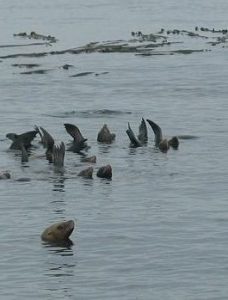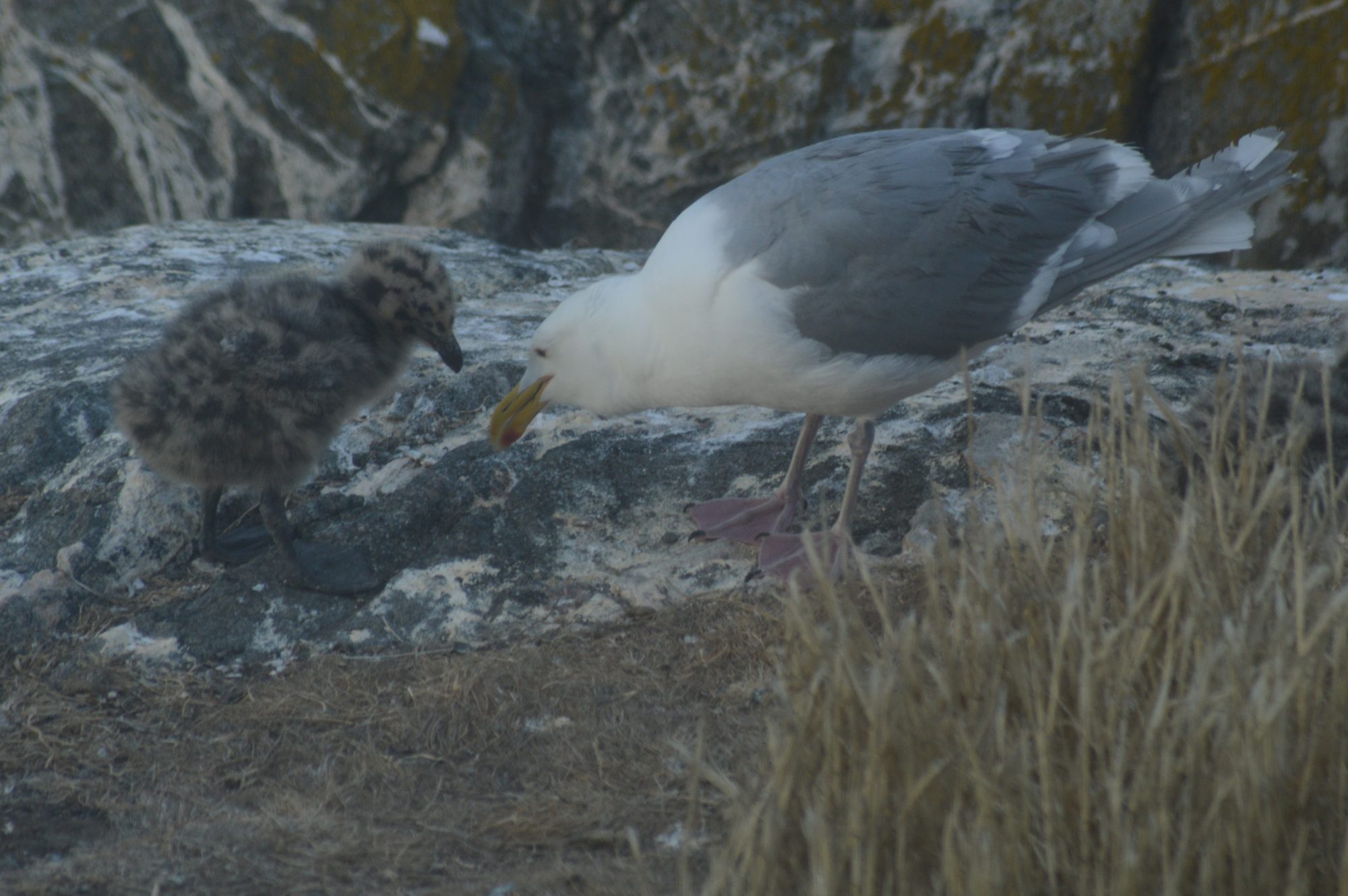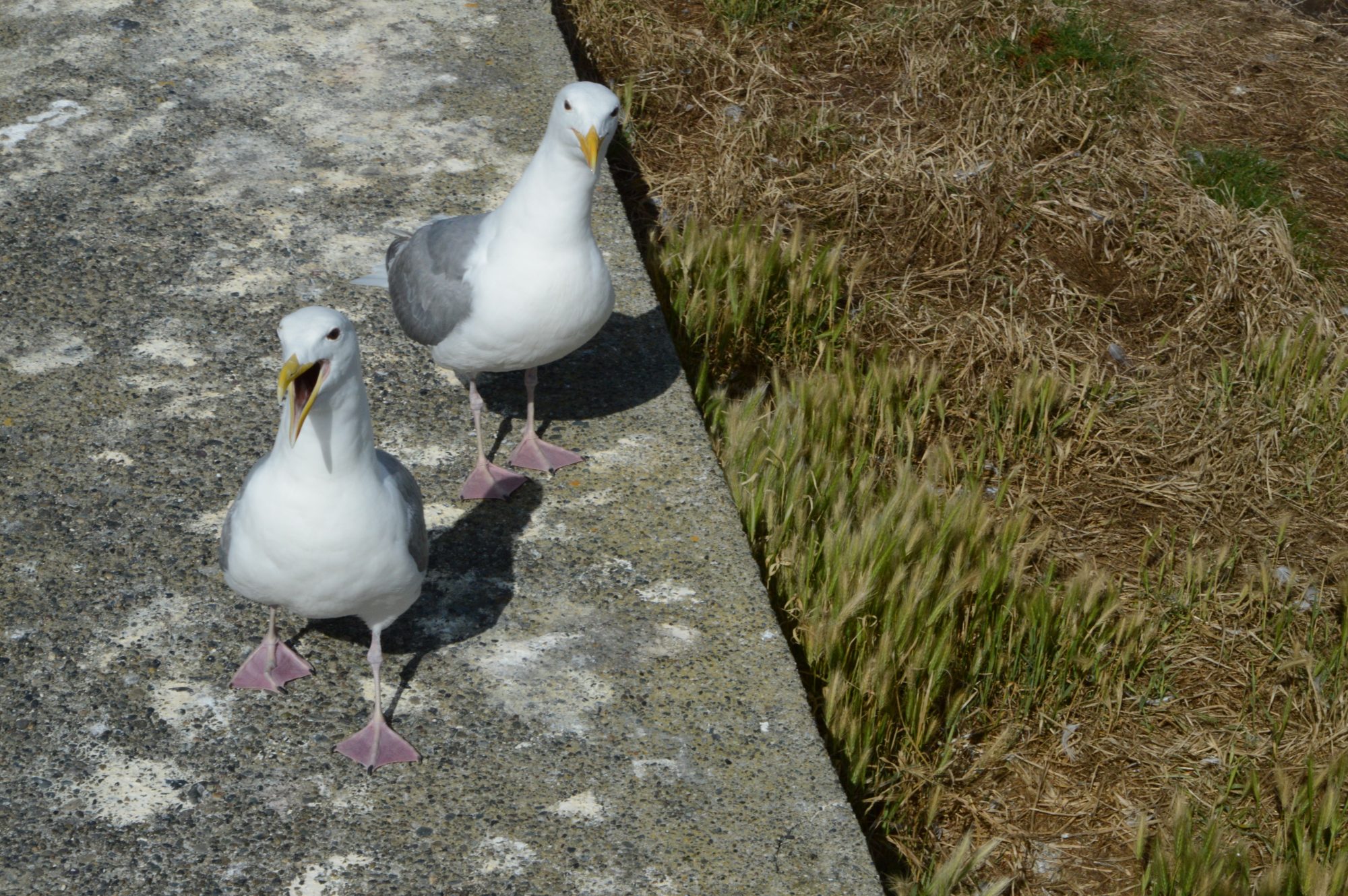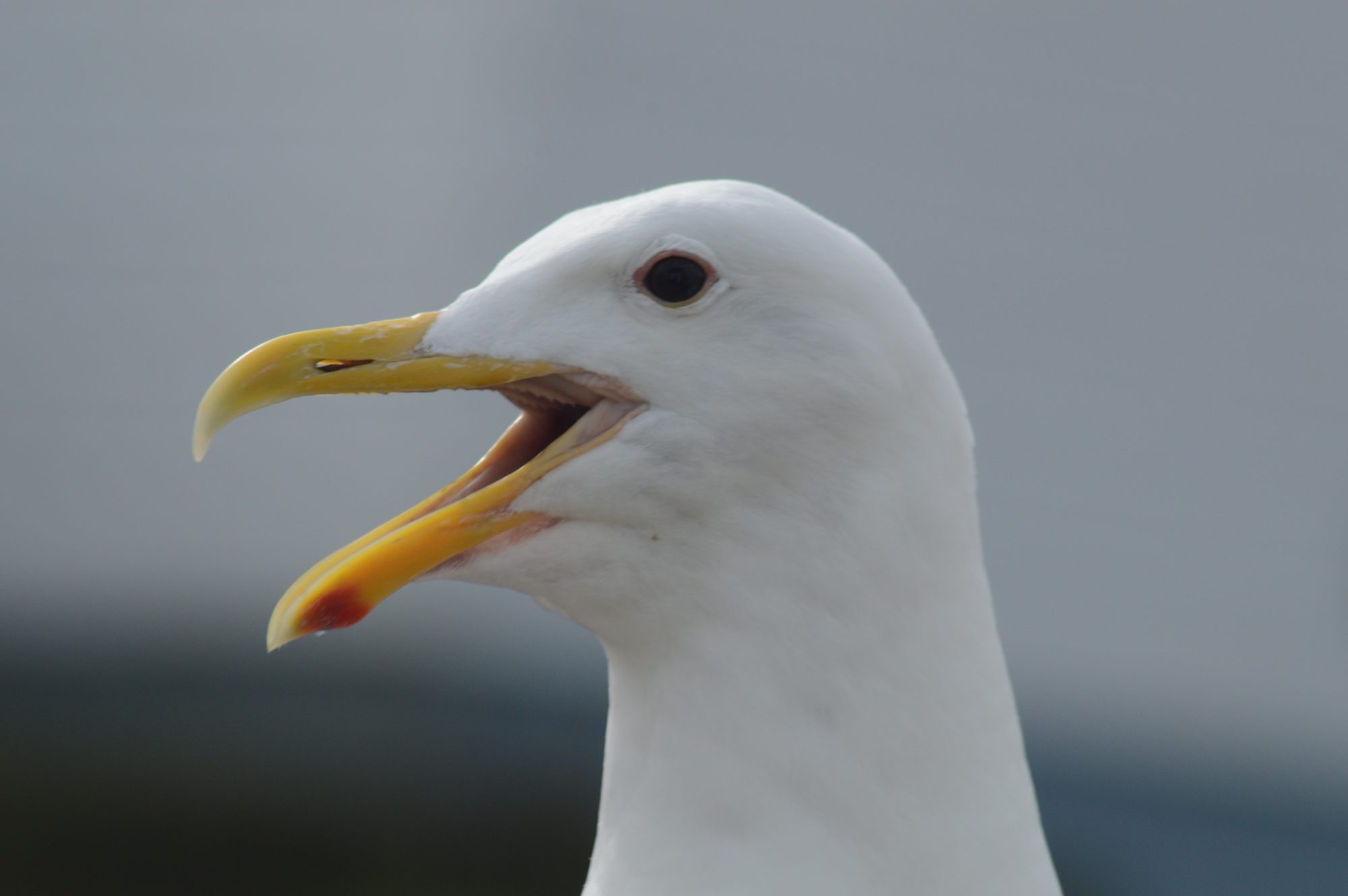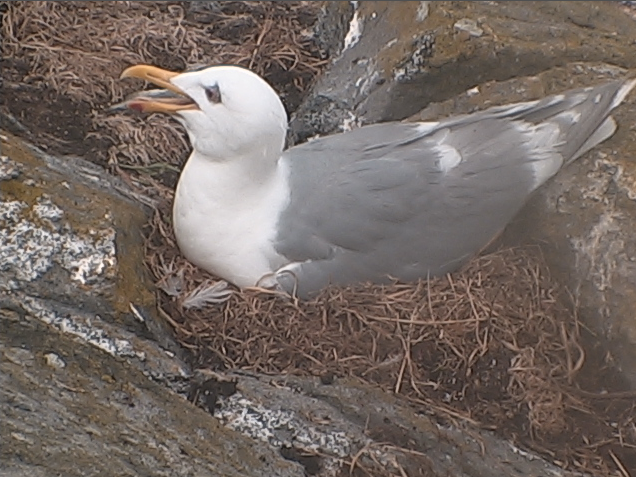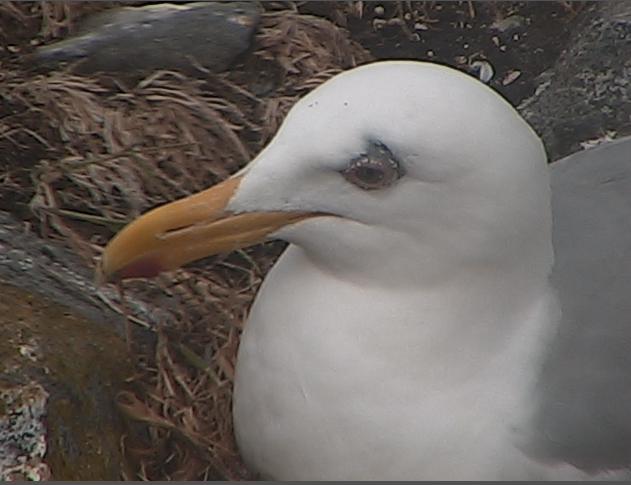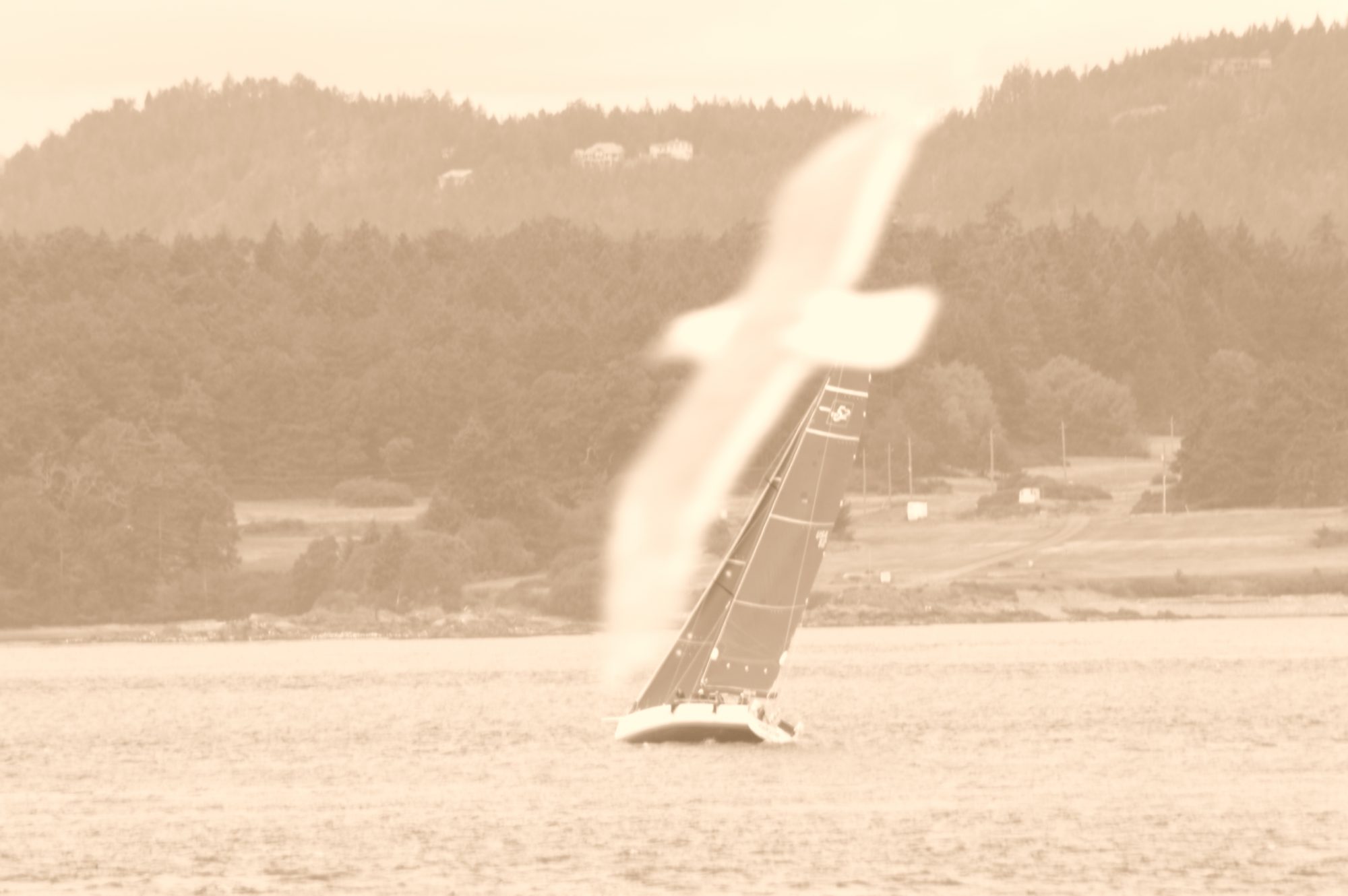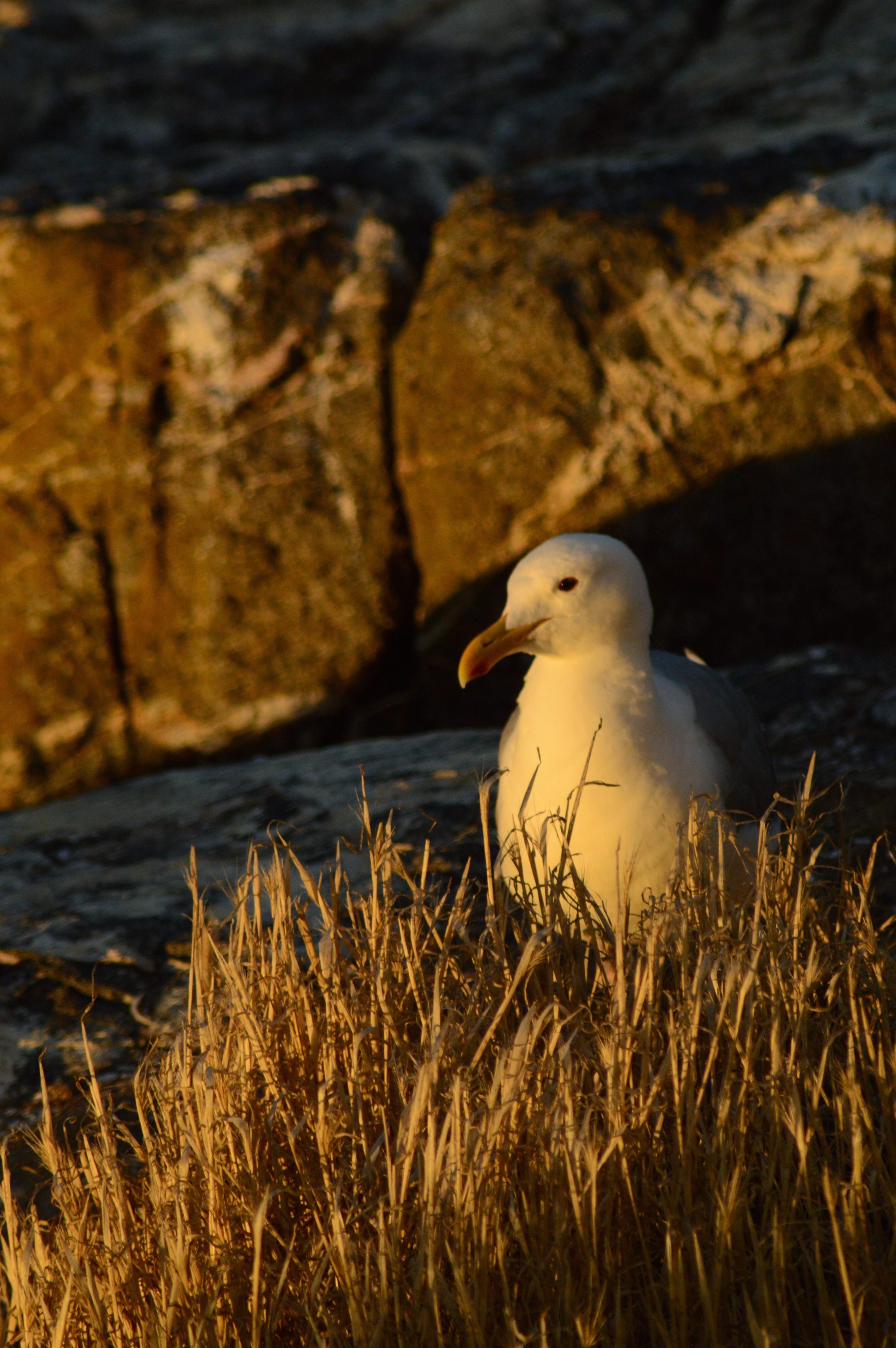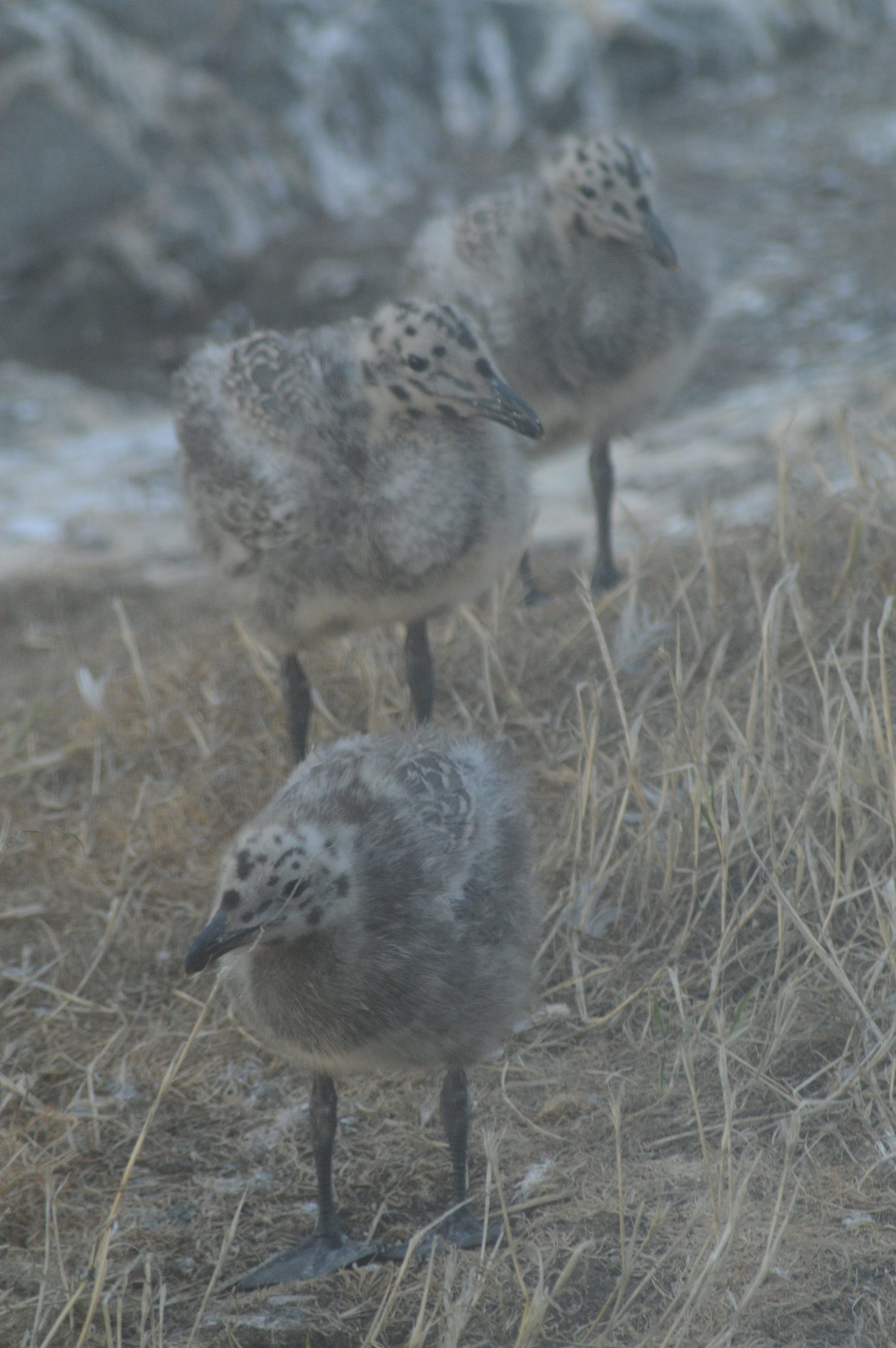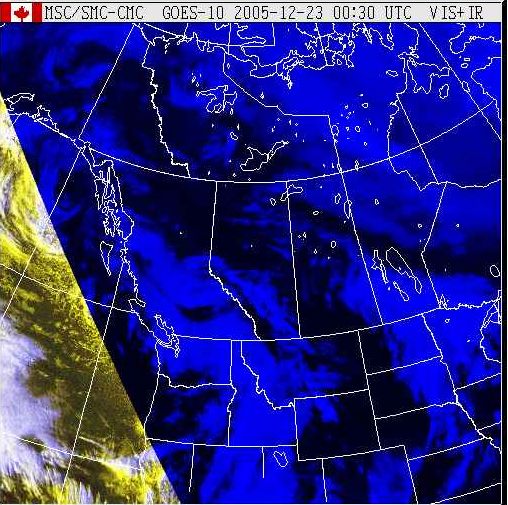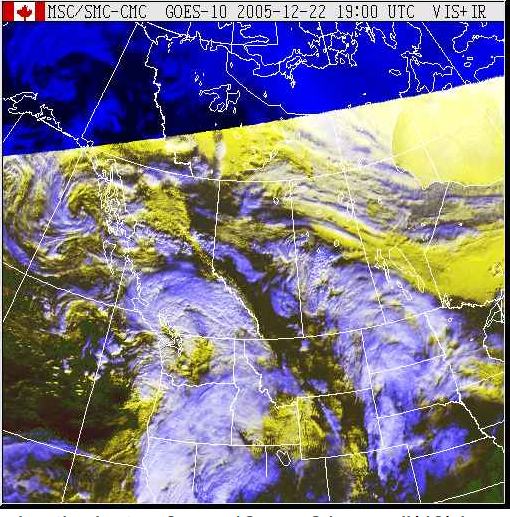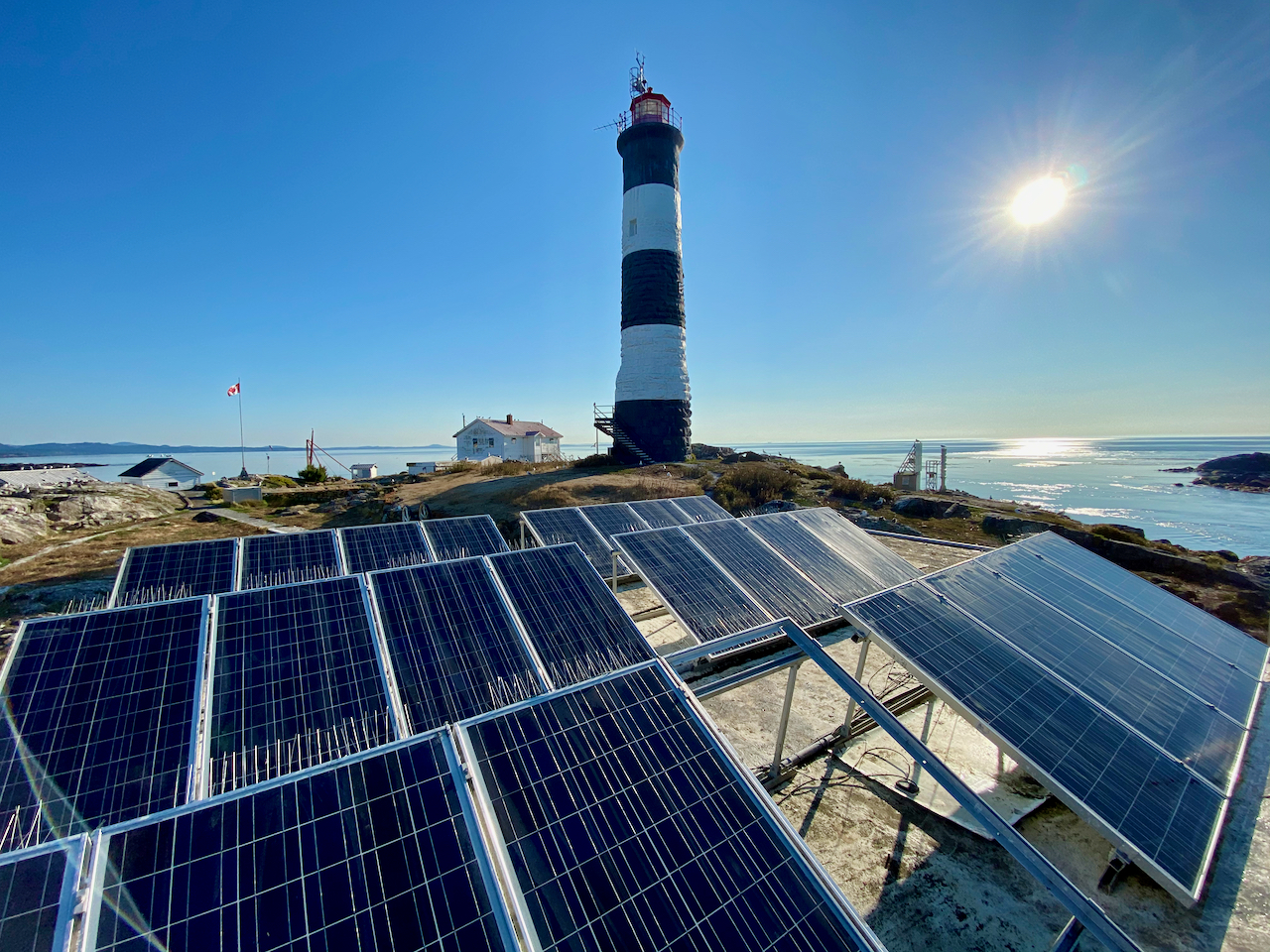Cormorant thermo-regulating while drying wings and Sea lions rafting while exposing fins or tail for heat exchange and thermoregulation. below , Glaucous-winged gulls panting on a hot July day
- Feeding time
- Glaucous winged gull chicks
9. C4 and CAM adaptation for xerophytic conditions eg stone crop, plantain
10. Microniches and temperature availability – eg sea slater isopod video
Aldridge Point (Figure 1) is a rocky outcrop with a small cove on the north side. The cove has a gravel beach and is bounded by the terrestial vegetation, comprised of arbutus, Douglas fir, salal and pine. The rocky area is composed of bedrock with many smooth vertical faces, dissected by numerous cracks and crevices. There are also large boulders piled one on top of the other down to the low tide level. Many of these boulders are up to 4 feet in diameter. A detailed species list for this area is presented in Appendix 2. In summary, the intertidal area shows the species that are characteristic of moderately wave exposed areas of southern Vancouver Island. The flat rock faces of the upper intertidal are sparsely populated by barnacles, lichens and algae (Porphyra and Fucus distichus).The numerous cracks and crevices harbour snails’, crabs and limpets, while tidepools are inhabited by anemones, mussels, limpets, snails, hermit crabs and coralline algae.
The rocky shores throughout the proposed park area are generally smooth, steeply sloping and dissected by numerous cracks and crevices. The topography and substratum of a shore influences the gradient of conditions on the shore by variations in the water-retaining capacity. As the tide recedes, the intertidal areas start to dry out. The rate of drying depends, firstly, upon the slope of the shore, with steeply sloping rock faces draining more rapidly than undulating platforms or shallow slopes. Cracks and crevices provide micro-environments in which the rate of drainage, and the drying effects of sun and wind are greatly reduced, and permit colonization to higher levels on the shore than occurs on the open rock faces in the same location. This “uplift” of the intertidal zonation may be noted in cracks and crevices throughout the proposed park area.
11. Adaptations of marine animals to low light intensities
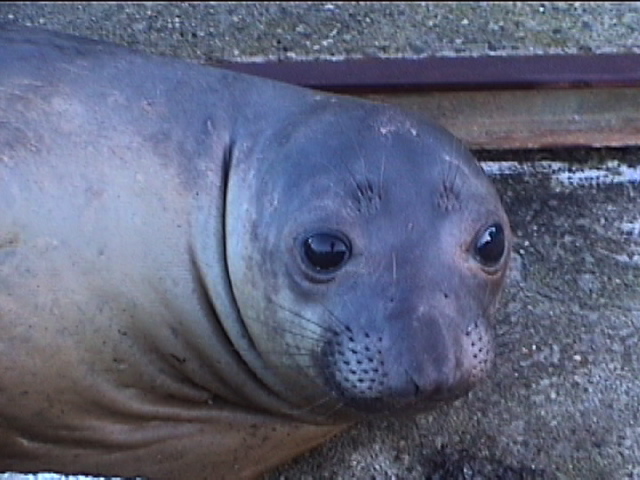 For example, the female elephant seal has very big eyes
For example, the female elephant seal has very big eyes
See the elephant seal file in the Taxonomy.
12. Temperature regulation – flippers being held by sea lions and the wings being held out by cormorants and gulls.( see photograph s at the beginning of this file.)
13. Fog as a product of solar energy and the resulting effect on visibility for organisms.
eg: .feeding,mating, migration.
14. The sun contributes to tides which have a big effect on organisms
15. The illumination of the earth changes with the tilt of the planet . The result is seasons.
Seasons have a great impact on organisms. At the ecological reserve the animal census posts reflect the presence of migratory birds, and of course nesting birds , all determined by seasonal influence.
On Dec 22nd it can be noted that it was still sunlight in the Western part of Alaska and in California when it was already dark here at Race Rocks. From the GOES Satellite we can see the limit of the sunlight in Northern Canada on the 22 of December 2005. These images are taken from satellite images from the Satellite file
The SOLAR ENERGY component of the Integrated Energy Project at Race Rocks


